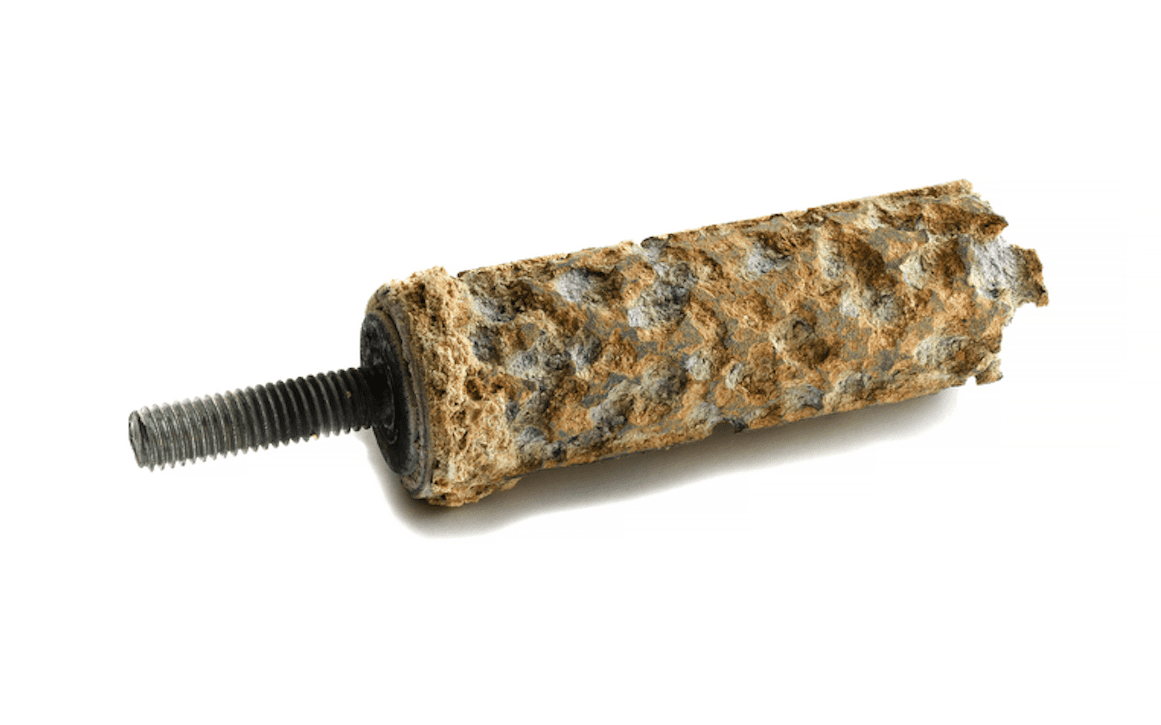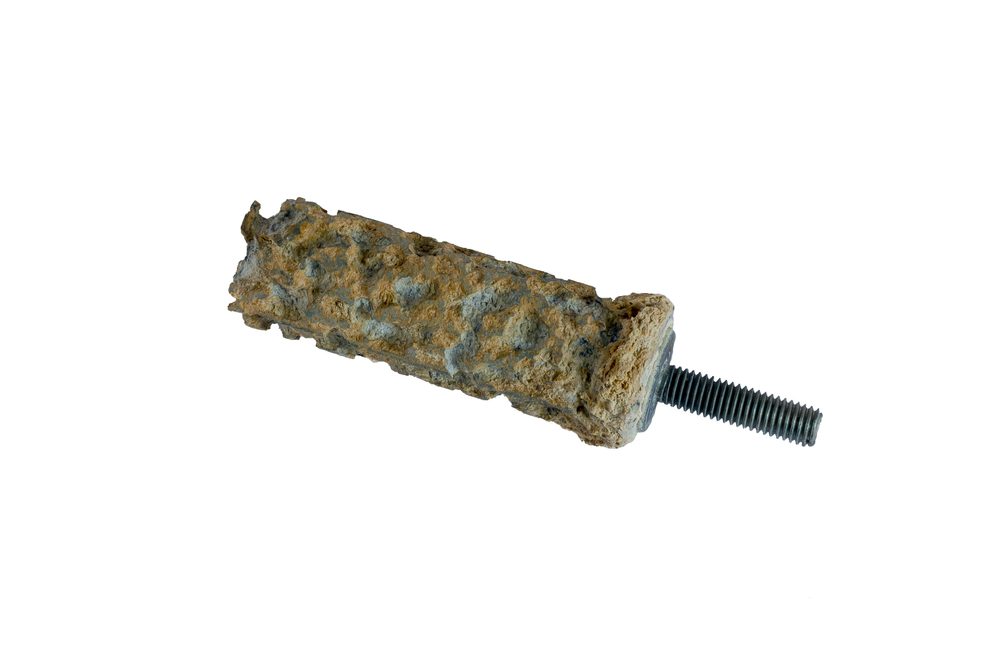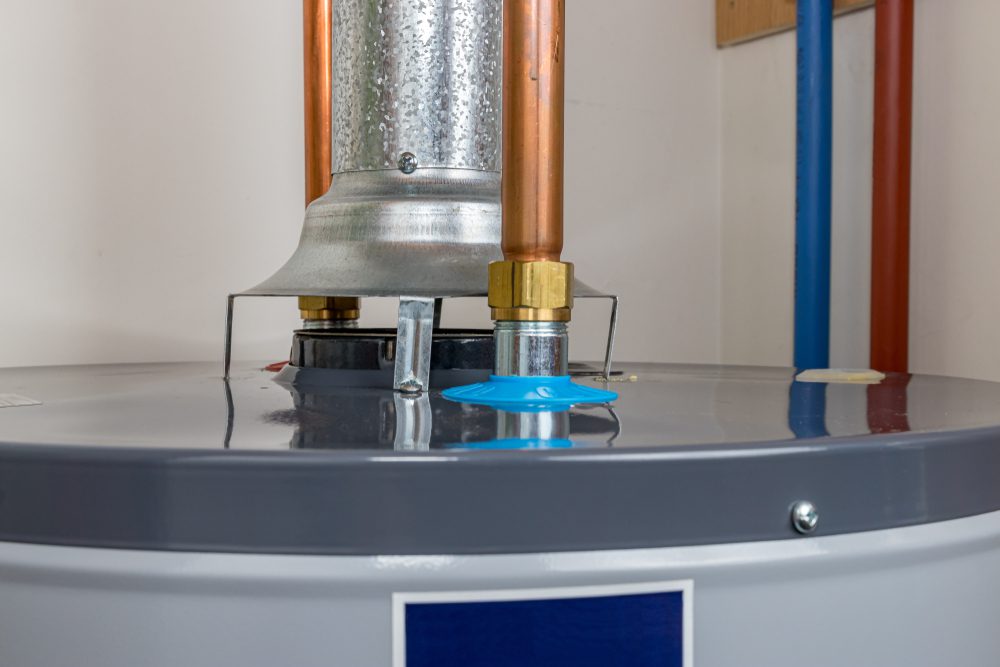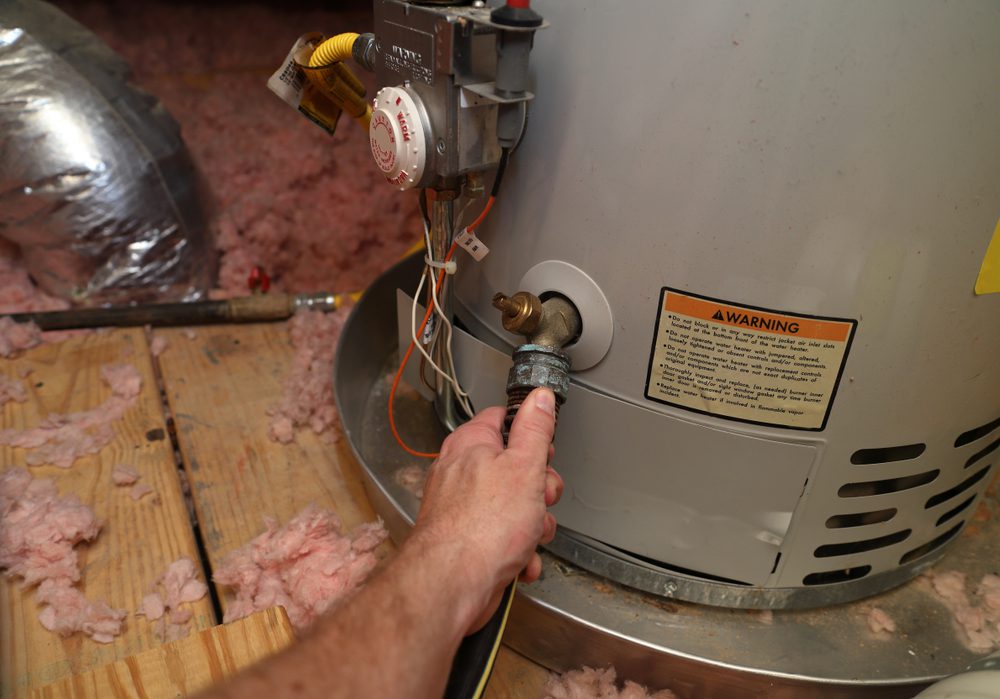
The components and parts of a water heater are often overlooked. However, it’s important to be familiar with the parts in your water heater to ensure you can respond to problems quickly when they occur. Among one of the most important parts of the water heater is the anode rod. To help you diagnose issues with your water heater, we have summarized the purpose of an anode rod. In addition, we have compiled a list of 3 different types of anode rod issues and steps you will need to follow to replace a deteriorated rod.
What Is An Anode Rod and How Does It Work?
An anode rod is a steel wire surrounded by either zinc, aluminum, or magnesium. It is usually about 4 feet long. It is screwed into the top of a water heater and protects the water tank from the formation of rust. It does this through a process called electrolysis. The anode rod is designed to be submerged in water to attract rust and contaminants. Since this component attracts impurities in the water, it will prevent and stop deterioration on the inner steel walls of the water tank. This self-sacrificial process of the metal rod ensures the water heater’s longevity since it won’t rust.
Ordinary Problems With Anode Rods & Tips
Anode rods are supposed to last about three to five years, but it largely depends on the quality of your water and how much water travels through your water heater. When they stop functioning, it can be due to different things. Here are 3 types of problems that occur with anode rods:
 Deterioration
Deterioration
Deterioration is the most common type of problem with an anode rod in a hot water heater. However, if the rod is deteriorating and corroding, it means that it’s doing its job, which is why this is the most common problem. If the steel wire of the rod’s core is exposed, then it might be time for a new one. Anode rod corrosion starts at the top or bottom of the rod and continues on to the core. If there is more than 6 inches of deterioration, it is time to replace it.
Tips & Insights: Why Are the Coils in My Air Conditioner Frozen?
Soft Water With High Mineral Concentration
Softening agents are added to water by water softener systems, such as phosphates and rock salt. While soft water might be preferred for some, it can actually cause the water heater anode rod to corrode three times as fast as hard water. It can even corrode the steel wire core, which then can lead to damage of the hex head of the tank, and the tank itself. If the anode rod is more than ½ of its original diameter, then it needs to be replaced.
Collection of Calcium Carbonate
It is not abnormal for calcium carbonate to collect on the exterior of an anode rod in a water heater. These white minerals keep the rod from corroding. While this may be beneficial under any other circumstance, the whole point of the anode rod is to corrode to keep the water tank safe. You can simply wipe off the calcium carbonate with a towel.
 How To Replace A Deteriorated Anode Rod
How To Replace A Deteriorated Anode Rod
1.) Deactivate the Water Heater
Before anything, you need to shut off the power and water. You can turn off the circuit breaker or turn off the thermostat on a gas-powered water heater. Turn off the water by using the valve on the cold water supply line. You can also shut off the water from the meter. Water meters are usually located somewhere outside your house and have a gray or brown lid on them.
2.) Locate the Anode Rod
As mentioned earlier, the water heater anode rod sits near the top of your water heater. If you are having trouble locating it, use your water heater’s manual to see where it is. Alternatively, you can look up the model of your water heater online and see a diagram of it.
Tips & Insights: Top Signs It’s Time to Repair or Replace Your Central Air Conditioner
3.) Drain the Water From the Hot Water Tank
There is a drain valve on the bottom of the water heater’s tank. Connect a garden house to this outlet and extend it outside or near a drain. Drain about 10% of the water from the tank. If the anode rod is on the side of your tank, you might need to drain additional water. To do this successfully, make sure the drain valve is open and a hot water valve is open. Many people opt for draining the whole tank.
4.) Disassemble the Anode Rod
Remove the anode rod in the hot water heater with a boxed end wrench or socket. Tightening the anode rod before loosening it can help break it loose and make the removal process easier. Do not use any penetrating fluids as they can make their way into your water heater and contaminate the water. To check to see if your water heater anode rod is still good, pay attention to what happens as you try to lift it out of the water heater. If it is too big to be removed from the water heater, then it is still serving its purpose. If it is completely rusted away, then it will be able to be extracted from the water heater.
5.) Purchase and Install the New Rod
Go to your local hardware store to buy a new anode rod. Buying an aluminum rod instead of magnesium could boost your heater’s life since aluminum produces a stronger current. When installing the rod, insert it and turn it clockwise until it cannot be turned by hand. Then tighten it some more with a socket wrench. Make sure the water heater does not turn or twist while you do this.
6.) Activate the Water Heater
If the drain valve hasn’t been closed yet, close it and turn the cold water apply on. Open the same hot water valve you used when initially draining the tank, allowing it to flow until all air is gone from the tank. The faucet will make spitting and hissing noises as air escapes. Turn on the power or gas again and set the thermostat to the desired water temperature.
 Water Heater Repair & Installation Services
Water Heater Repair & Installation Services
Snell Heating & Air Conditioning provides fast and dependable water heater repair and maintenance services to homes in Virginia. In addition, we offer other types of emergency plumbing services such as sump pump installation and gas line replacement. From maintenance to installation and replacement, trust our team of plumbers in Alexandria, VA to restore the distribution of warm water in your house. Give our team a call by phone at (703) 543-9649 to discuss your water heater problems.
Tips & Insights: How to Keep Your House Cold in the Summer

